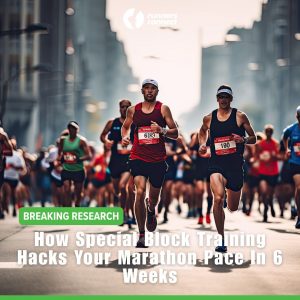It is sometimes hard to believe that there was ever a time before the Internet. Today, one can date, shop, attend school, chat, and share meaningful life events, all without leaving the comfort of home.
In many ways, this age of technological dependency is wonderful. It seems that you can find an answer on the Internet to almost any question. Over the past 10 years, as a runner, the Internet has been an invaluable resource, letting me know when to ice a sore muscle and when to heat it, filling me in on what vitamins the Olympians are taking so I can up my arsenal, and showing me where the best trails are when I am visiting a new city.
Naturally, when I decided it was time for me to start considering a form of birth control before my impending wedding, I turned to my beloved Internet and searched, “effects of various types of birth control on runners”.
Nothing.
I stared blankly at the screen as the resulting pages scrolled by. There was forum after forum, each asking the same question I was. The only pages that were remotely scientific contained data so general and vague that the conclusions drawn simply stated that different forms of birth control affected different women in different ways. Duh.
After a few minutes of worthless browsing, I turned to a somewhat more promising, not quite as objective corner of the Internet: Facebook. I sent a mass message to 60 female runners that I thought might have some experience with the effects of birth control on their running. The responses I received were staggering.
Immediately, the replies came pouring in, venting frustration similar to my own.
Like me, most of these women had used the Internet at some point to seek out how different forms of birth control might impact them as athletes, only to find inadequate research and frustrating forums. The message thread grew longer and longer as these women runners began to share their experiences with different methods of birth control. For most, finding the right kind of birth control was a trial and error process, and I eagerly soaked the information up.
As the stories continued to build, I realized that within the context of a Facebook message, I had probably gleaned more data on how birth control affects female runners than exists on the Internet to date. This information is too valuable not to share, so I’d like to reveal my findings to you.
The Pill
A very popular method of birth control among women today, the pill has both downsides and upsides regarding its affect on the runner’s body.
The Upside: Often, female runners over train to the the point that they experience amenorrhea, the loss of the menstrual cycle. The pill, especially a pill with a low hormonal dose like Levlen, can encourage the body’s period regulation, reducing the risk of osteoporosis later in life for runners who would otherwise lose their cycle. Even if the evidence of the cycle itself does not return, the calcium uptake in the bones is present while on the pill.
The Downside: For many runners, especially those looking to lose weight, the pill is notorious for both bloating and weight gain, leading to a decrease in athletic performance. Many of the women who had been on the pill also felt that it lessened their competitive edge, and several said that they just felt “off”.
Obviously, some women react more strongly than others to hormonal shifts in their bodies, and I gathered from the responses that if you are highly affected by the hormonal changes that your body experiences during the pre-menstrual phase (PMS), you will more likely be impacted by the hormones in the pill than someone who experiences no emotional or physical changes during the pre-menstrual phase.
The IUD
The IUD is placed inside the uterus and left there for a long span of time (5-10 years), preventing pregnancy with the use of hormones or copper coils.
The Upside: A copper IUD like Paragard (10 years) is hormone free and encourages period regularity without much risk of weight gain while the IUD Mirena (5 years) lessons period cramps and heavy flow, an enticing offer for the runner who risks the incident of a heavy period and cramps on race day.
The women who responded that they had been using the Paragard IUD said that they had noticed no changes in their training and that they would recommend it for anyone.
The Downside: The Paragard IUD includes heavy cramping and a heavier flow as very common side affects, and women who had used both IUDs expressed some discomfort during their runs in the days following its placement in the uterus.
Condoms
*The Diaphragm also falls under this category.
The Upside: Condoms, being non-hormonal, have no effect whatsoever on the runner. One woman who responded is a two time Olympian. She stated that she, and most of the elite runners that she knew, used condoms because of the negative side affects that they had experienced while on the pill.
The Downside: From a running standpoint, none.
Natural family planning
*For those interested in this method, Toni Weschler’s Taking Charge of your Fertility outlines the parameters of Fertility Awareness.
The Upside: Runners are often encouraged to ignore the signs of their bodies (pain, fatigue, etc…), and natural family planning that includes temperature, cervical fluid and cervical placement charting, encourages women to get in touch with their unique internal clock. Natural family planning relies on the use of contraceptives or abstinence during the ovulation phase of the cycle and thus, is as effective as the type of contraception used during the fertile phase. Of all types of birth control, Natural Family Planning seems to be the most conducive for an unaltered training regime and will in no way affect the natural cycle of the runner.
The Downside: Accurate base temperature charting in the Natural Family Planning method requires that one rises at the same time each morning, especially during the fertile phase, and this can be difficult when early morning races can throw the normal waking time off by several hours. Other than this minor detail, there are no downsides to the Natural Family Planning method.
The most important thing that this exchange taught me is how vital it is that we as female athletes share our experiences with each other. So go for a run with a girlfriend, talk about the things no one talks about, and enjoy the time on your feet, away from the Internet.
*None of the above information constitutes as medical advice. Consult your physician before considering any type of birth control method.
 Coach Sarah Crouch is the newest edition to the RunnersConnect coaching staff, but she is no stranger to coaching and training. Coach Sarah is a two-time Olympic Trials qualifier, is a member of the Reebok ZAP Fitness professional team, and has been running for the past 11 years. Her coaching career began in 2009 as part of Girls on the Run and has expanded to include working with runners of all experience levels.
Coach Sarah Crouch is the newest edition to the RunnersConnect coaching staff, but she is no stranger to coaching and training. Coach Sarah is a two-time Olympic Trials qualifier, is a member of the Reebok ZAP Fitness professional team, and has been running for the past 11 years. Her coaching career began in 2009 as part of Girls on the Run and has expanded to include working with runners of all experience levels.
If you’re interested in working with Coach Sarah, she is available via our Personal Coaching service. Each of our coaches works with a maximum of 20 athletes to ensure a truly personal coaching experience, so don’t hesitate to contact us if you’re interested.






11 Responses
Thanks for the post– only thing I’d add is more of a warning that taking birth control masks the symptoms of amenorrhea and the female athlete triad, and taking birth control while still overtraining/undereating is definitely not healthy for your body. You’re just masking the underlying cause of why you’re not getting your menstrual cycle – that you aren’t matching your energy expenditure properly. (getting in enough food for the amount of activity you do) I’ve seen plenty of doctors regarding this. Best and healthiest to regain your menstrual cycle naturally before going on birth control.
Jenny,
I completely agree, in fact, some of the women I interviewed hadn’t had a regular cycle in 3-4 years due to overtraining/undereating. I intend to write a separate article discussing this issue because it is so prevalent in the sport of running. This article, however, is simply intended to reveal the effects of certain types of birth control on running.
Thanks so much for this information Sarah. I just recently researched this same topic, and like you was surprised there wasn’t more information available. I’m also incredibly interested in your post about amenorrhea/loss of cycle. I haven’t had a regular cycle in 2+ years of hard training and when I talked to my physician about it she continually reassured me it was completely normal and okay. From the research I have done it is not and it was somewhat shocking to hear from a doctor not to worry about it. So I am looking forward to hearing what you have to say.
It’s interesting (and scary) how many women, even doctors, think time spent without a cycle is normal and not harmful. This couldn’t be further from the truth, especially relating to bone health. Expect that article in 2 weeks following next week’s post about women runners and safety.
Thanks for this – I was very interested in your article, especially as I’m just about to change my method. I noticed it doesn’t mention Depo-Provera (3 monthly injection). Do you know the effects of this (or maybe there isn’t any!)
Kay, because Depo-Provera is a hormone-based birth control, it’s side effects are similar to those of the pill and include possible weight gain, lethargy and bloating. Read more about it here:
http://www.drugs.com/sfx/depo-provera-side-effects.html
This is very interesting, I am currently trying for my second baby, this has been going on for 2 years and in that time I have trained up to 4 times a week for my first half, which I completed in June in 2h10, but avail still no pregnancy. Could I be over training? I have also rested for 6 weeks, and still no pregnancy? Could it be my body and hormones? I am a 34 year old female?
Samantha, have you been having regular cycles or any cycles at all? Basically, the body needs to retain a certain amount of fat in order to ovulate, release the egg and have a definitive thermal shift, if the body does not have enough fat, it cannot ovulate, no egg will be released and you will be unable to get pregnant no matter what you do. If you are having cycles, make sure you are “trying” to get pregnant on both the days surrounding ovulation and the day of ovulation itself, and if this still does not work, I encourage you to seek out a fertility specialist. For you, I would highly recommend getting Toni Weschler’s “Taking Charge of Your Fertility” as it has several chapters explaining how to increase your chances of getting pregnant.
Thankyou for doing this bit of research Sarah. I have just gone back on the OCP after 13 yrs of no contraception due to anaemia (menorrhagia). I was training for a marathon when I found out I was anaemic, was going to get the mirena but due to initial side effects of possible bleeding/continual spotting I elected to postpone it. I have now been on the OCP for nearly 5 mths and definately noticed I have put on weight, feel more bloated….but thought that was because I was eating more for my endurance runs. My times have definitely improved due to corrected iron levels and did really well in my first marathon in July. After reading your post I am going to definitely give the mirena a go as I do not want to go back to having heavy periods ever again!!
Hi Sarah,
Is there any information about hormonal birth control and Deep Vein Thrombosis in runners? DVT has been associated with both endurance running AND with hormonal birth control. It seems that doing both would be bad news…..
I’ve noticed that the pill also makes me very lethargic and fatigued…which makes it hard to stick to a training plan. I feel and perform better when off the pill – though the pill was helpful in regulating my periods and clearing up acne.